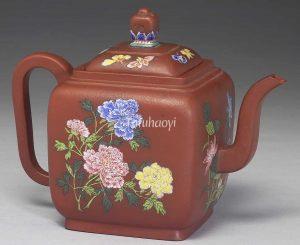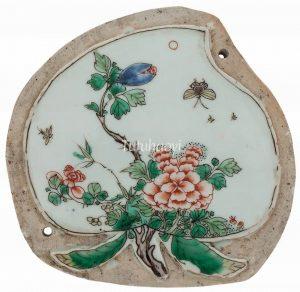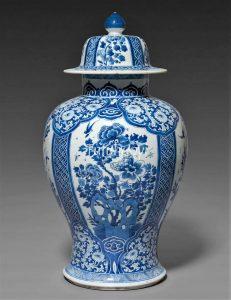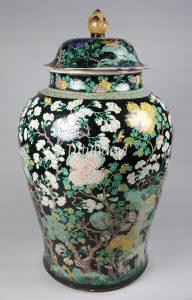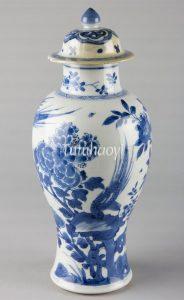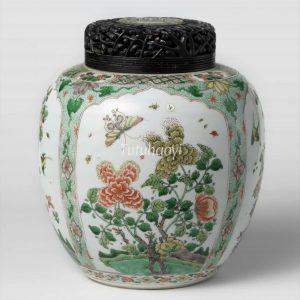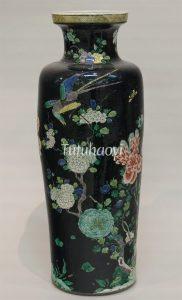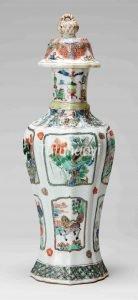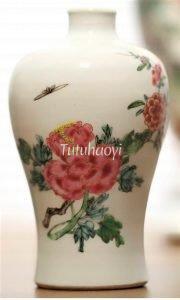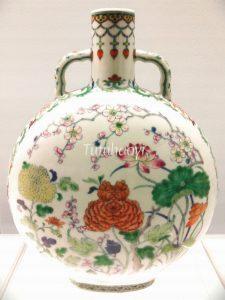Two-horned peony blossom
双犄牡丹
© Tutuhaoyi.com owns the copyright of the description content for the images attached. Quoting all or part of the description content on this page is permitted ONLY IF ‘Tutuhaoyi.com’ is clearly acknowledged anywhere your quote is produced unless stated otherwise. (本页描述内容版权归Tutuhaoyi.com所有,转发或引用需注明 “Tutuhaoyi.com”, 侵权必究, 已注开源信息的条目除外。)
Common sources such as Baidu refer to the motif of a peony flower head with two distinctive ‘horns’ as a characteristic feature unique to Chinese porcelain of the Kangxi period (1662–1722). As a matter of fact, the tradition can be traced back as early as a fan painting by the legendary Ming romantic artist Tang Yin (唐寅, 1470–1524).
Read more about Dr Yibin Ni’s research on this motif in this blog.
Fig 1-2: teapot, Kangxi period (1662–1722), Qing dynasty, courtesy of the National Palace Museum, Taipei
Fig 3: famille verte plaque, Kangxi period (1662–1722), Qing dynasty, courtesy of the Jie Rui Tang Collection
Fig 4: saucer dish, Kangxi period (1662–1722), Qing dynasty, courtesy of the Rijksmuseum, Amsterdam
Fig 5: porcelain vase, Kangxi period (1662–1722), Qing dynasty, courtesy of the Cleveland Museum of Art
Fig 6 & 7: covered jars, Kangxi period (1662–1722), Qing dynasty, courtesy of the Metropolitan Museum of Art, New York
Fig 8: ovoid covered jar, Kangxi – Yongzheng (1662–1735), Qing dynasty, courtesy of the Rijksmuseum, Amsterdam
Fig 9: covered jar, Kangxi – Yongzheng (1662–1735), Qing dynasty, courtesy of the Rijksmuseum, Amsterdam
Fig 10: vase, Kangxi period (1662–1722), Qing dynasty, courtesy of the Metropolitan Museum of Art, New York
Fig 11: vase, Kangxi period (1662–1722), Qing dynasty, courtesy of Minneapolis Institute of Art
Fig 12: porcelain vase, early Qing dynasty, courtesy of Guimet Museum, Paris
Fig 13: doucai porcelain moonflask, Yongzheng period (1723–35), Qing dynasty, courtesy of Shanghai Museum, China
Fig 14: famille rose porcelain bowl, Yongzheng period (1723–35), Qing dynasty, courtesy of National Museums Scotland

